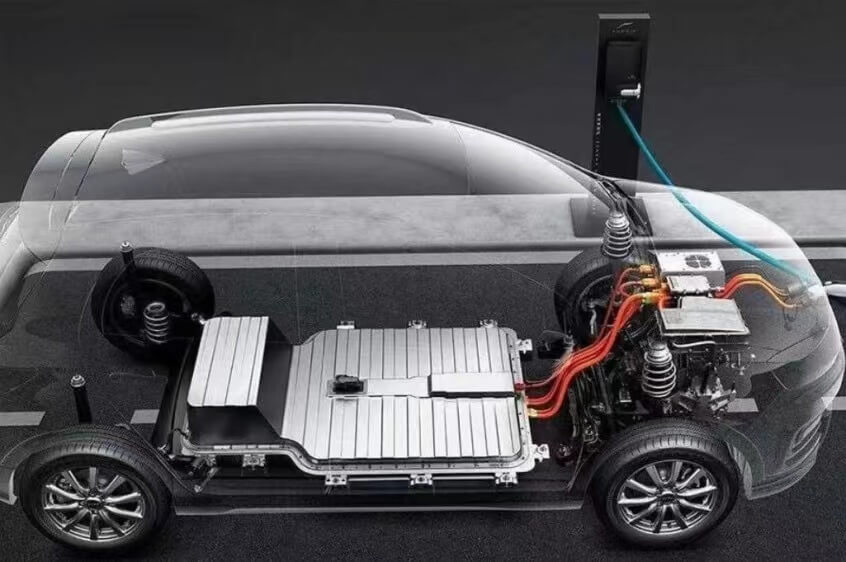在科技日新月异的今天,新能源汽车,尤其是电动汽车正逐步改变人类的出行方式。电动汽车以环保、智能化为主要特征,而这一切离不开人机界面(HMI)技术的支持。HMI,即Human-Machine Interface,是连接用户与电子设备的桥梁,在电动汽车中扮演着关键角色。
什么是电动汽车
电动汽车(EV)是一种依靠车载电池为动力来源,通过电动机驱动行驶的交通工具。其主要种类包括:
- 纯电动汽车(BEV):完全依赖电池驱动。
- 混合动力电动汽车(HEV):结合内燃机和电动机。
- 插电式混合动力汽车(PHEV):电池可外接电源充电。
- 燃料电池汽车(FCEV):利用氢气和氧气反应发电。
这些汽车的结构均包含电动机、电池系统、电控系统和传动机构,其中HMI成为提升用户交互体验和系统监控能力的重要组成部分。
电动汽车的行业特点
电动汽车行业发展迅猛,具有以下几个显著特点:
- 技术集中度高:涵盖电池、电机、电控、材料、新能源等多个前沿技术。
- 市场需求多元:用户对续航、安全、智能化有更高要求。
- 政策推动显著:多国提供补贴、减税、限制燃油车政策。
- 环保与节能并重:电动汽车是减少碳排放的关键工具。
HMI技术的引入,使得整车控制更加高效,用户体验更为直观便捷,成为推动电动汽车行业智能化的核心技术之一。

HMI 在电动汽车中的6大应用
HMI在人车交互方面提供了前所未有的便利,使驾驶者能够通过触摸、语音甚至手势轻松控制车辆系统。以下是HMI在电动汽车中的主要应用场景:
1. 电池状态管理
通过HMI,驾驶者可实时查看电池电量、充电状态、剩余续航里程、充放电效率等重要数据。
2. 故障报警与系统反馈
HMI系统能在第一时间向用户反馈系统故障、预警信息,并提供简要处理建议,避免损失扩大。
3. 智能充电控制
通过HMI界面,用户可设置充电时间、充电功率,还可远程控制开始/停止充电,实现错峰充电,节省电费。
4. 多语言支持
HMI系统可支持多国语言,满足全球市场需求,提升产品通用性与友好度。
5. 驾驶模式切换
用户可通过HMI选择经济、标准、运动等不同驾驶模式,根据路况与需求灵活调节动力输出。
6. 导航与车载信息娱乐系统
HMI不仅提供路线导航、实时路况,还可连接智能手机、播放多媒体、进行语音控制等。

-
HMI的优势与技术演进
随着技术进步,HMI系统日益强大。以下是其关键优势:
- 直观交互:图形化界面使操作更清晰、便捷。
- 数据可视化:将复杂信息以图形形式呈现,易于理解。
- 系统整合性强:可与车辆多个子系统连接,统一控制。
- 模块化设计:便于维护和升级。
近年来,HMI正在由传统按钮与旋钮向全触控、语音交互、手势识别等方式转变。例如,STONE HMI系统就为众多电动汽车品牌提供了高性能、高稳定性的人机界面模块。
STONE HMI 在电动汽车中的实际案例
STONE 作为专业HMI解决方案提供商,其产品广泛应用于电动汽车及充电设备。以下为几个典型应用场景:
A. 车载信息显示模块
STONE的HMI模块可集成于中控台或仪表盘,用于显示行车数据、电池状态、导航信息等,提供清晰直观的操作界面。
B. 智能充电桩控制面板
利用STONE HMI,用户可通过触摸屏设定充电参数、查看电价信息、接收支付二维码等,提升使用体验。
C. 车辆远程控制系统
通过STONE的HMI模块连接物联网,用户可通过手机APP远程查看车辆状态,进行充电、门锁控制等操作。

HMI在不同类型电动汽车中的作用
1. BEV(纯电动汽车)
HMI用于实时电池监控、热管理、能量回收控制,是维持稳定续航的关键。
2. HEV(混合动力汽车)
在多动力源切换中,HMI界面能及时展示当前动力状态,辅助用户做出合理驾驶选择。
3. FCEV(燃料电池汽车)
燃料系统状态显示、氢气压力监控、燃料电池工作温度等通过HMI实时反馈,有效提升安全性。

未来趋势:HMI+AI+IoT
随着人工智能与物联网的结合,未来电动汽车的HMI系统将更加智能化。例如:
- 自适应界面布局:根据驾驶习惯调整菜单与布局。
- 语音助手集成:自然语义识别控制车内功能。
- OTA远程升级:保持界面与功能常新。
- 驾驶行为分析:通过HMI采集数据,优化驾驶方式。
HMI将在用户体验、安全保障、能源管理等方面发挥更大作用,成为未来智能汽车系统中不可或缺的一环。
总结
HMI技术为电动汽车注入了智能与人性化的灵魂。从车辆控制、电池管理,到信息娱乐与远程操控,HMI贯穿于车辆操作的每一个细节。STONE作为高端HMI产品提供商,正推动电动汽车迈向更高层次的智能交互时代。随着HMI与AI、IoT的进一步融合,未来的电动汽车将更安全、更高效、更智能。